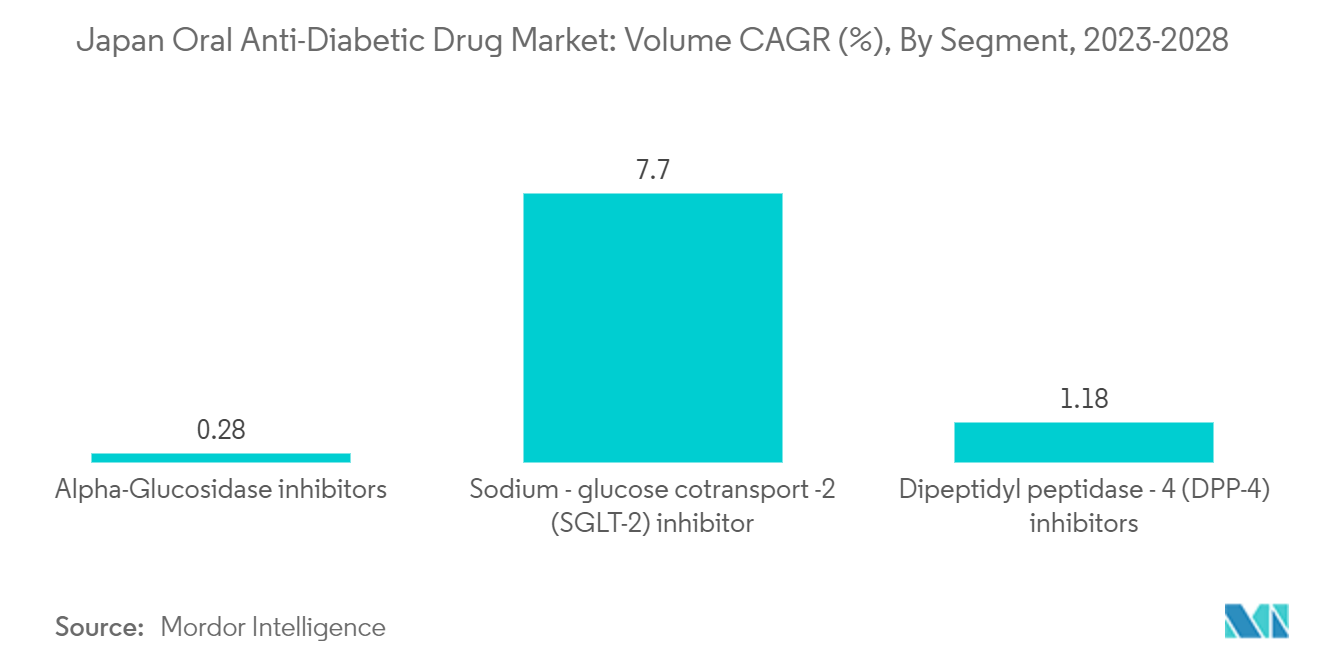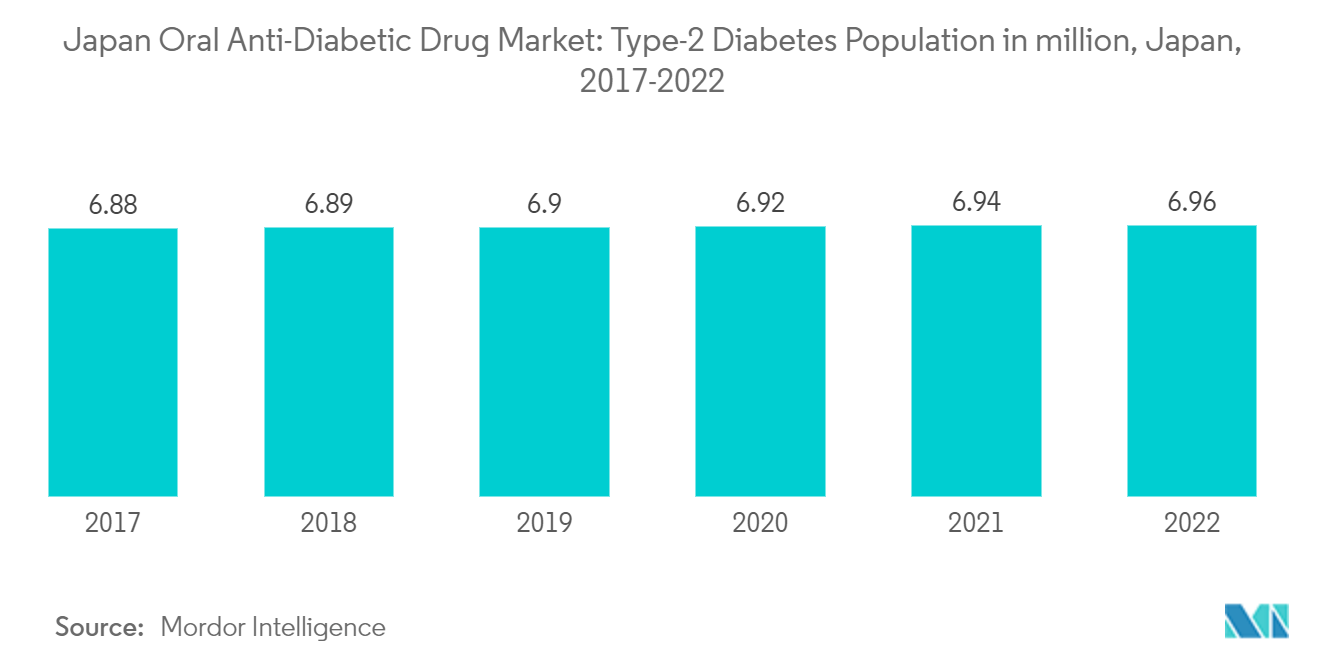Market Trends of Japan Oral Anti-Diabetic Drug Industry
Sodium - glucose cotransport -2 (SGLT-2) inhibitor Segment Occupied the Highest Market Share in the Japan Oral Anti-Diabetic Drugs Market in 2022
In 2020, dapagliflozin and empagliflozin received approval for treatment in patients with persistent symptomatic heart failure in Japan. These medications are sodium-glucose cotransporter 2 (SGLT2) inhibitors. This authorization means that a new significant group of patients is becoming eligible for therapy with an SGLT2 inhibitor following the rapid growth of prescriptions for SGLT2 inhibitors for patients with type 2 diabetes mellitus who also have a very high cardiovascular risk. Type 2 diabetes is related to adopting a sedentary lifestyle, which results in the development of innate resistance to insulin, in contrast to Type 1 diabetes, which is brought on by an immune system failure. As a result, Type 1 diabetes is known as insulin-required diabetes, and Type 2 diabetes is known as insulin-dependent diabetes. One of the greatest elderly populations in the world is found in Japan, where type 2 diabetes is more likely to develop. As Japan's population continues to age, diabetes is becoming more common. Blood glucose levels are increasingly being monitored and managed in order to prevent adverse effects like cardiovascular disorders. Throughout, the incidence of type-2 diabetes is increasing, which boosts demand for SGLT2 drugs. Prices are comparatively high in this location. Jardiance holds a 50% market share in the SGLT2 market in the US. Only one diabetic drug, Jardiance's active pharmacological component, lowers the risk of cardiovascular death in people with Type-2 diabetes.
Owing to the aforementioned factors, the market is expected to grow during the forecast period.

Increasing Diabetes Population in Japan is driving the market.
In January 2021, an article was published, 'Current trends in diabetes mellitus database research in Japan,' funded by AstraZeneca and Ono Pharmaceutical Co., Ltd., stated that East Asians tend to develop type 2 diabetes mellitus with a lower mean body mass index (BMI) compared with that in Caucasians, concomitantly having a greater amount of body fat with a tendency of visceral adiposity at any BMI. In Japanese patients, diabetes develops at a younger age and is characterized by early β-cell dysfunction with the coexistence of insulin resistance due to increased visceral adiposity.
According to an article published in 2022, 'Dietary Patterns and New-Onset Type 2 Diabetes Mellitus in Evacuees after the Great East Japan Earthquake: A 7-Year Longitudinal Analysis in the Fukushima Health Management Survey', there is evidence of associations between dietary behaviors or diet quality indices, food groups, single foods, and beverages, specific macronutrients and micronutrients, and the incidence of type 2 diabetes mellitus in Japan. Dietary patterns are considered to play a role in the onset or prevention of type 2 diabetes mellitus. The westernized diet makes Japanese people more prone to developing type 2 diabetes mellitus. While traditional Japanese food is characterized by low fat and calorie content, a shift in people's preference for processed food with higher animal fat and calories is thought to have increased abdominal adiposity.
It is therefore anticipated to drive the category expansion during the forecast period because of the aforementioned factors.

